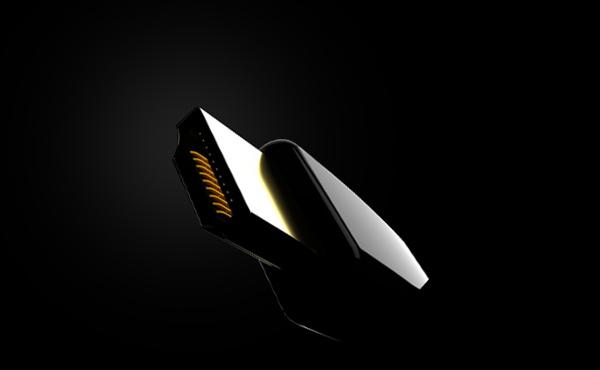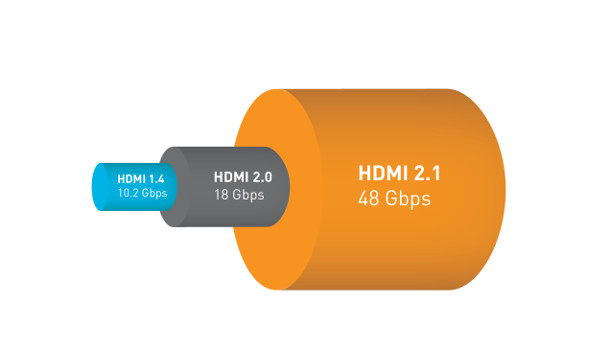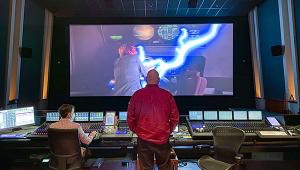HDMI 2.1: What You Need to Know

 When HDMI hit the scene in 2003 it was welcomed as a godsend, enabling enthusiasts to replace a rat’s nest of audio and video cables with a single connection. The specification has evolved steadily over the years to keep pace with the ever-changing AV landscape and encountered a few bumps along the way. In January, the HDMI Forum announced Version 2.1, a forward-looking upgrade of the current HDMI 2.0b spec. We recently caught up with HDMI Forum Chairman Chris Pasqualino to learn about the implications of HDMI 2.1 now and in the future.
When HDMI hit the scene in 2003 it was welcomed as a godsend, enabling enthusiasts to replace a rat’s nest of audio and video cables with a single connection. The specification has evolved steadily over the years to keep pace with the ever-changing AV landscape and encountered a few bumps along the way. In January, the HDMI Forum announced Version 2.1, a forward-looking upgrade of the current HDMI 2.0b spec. We recently caught up with HDMI Forum Chairman Chris Pasqualino to learn about the implications of HDMI 2.1 now and in the future.
S&V: Let’s start with some background on the Forum and the role it plays in the ongoing evolution of the HDMI audio/video interface, the de facto connection standard for AV gear.
Chris Pasqualino: The HDMI founders announced the formation of the HDMI Forum in 2011 with the mission to foster broader industry participation in the development of future versions of the HDMI specification. The Forum is an open trade association comprised of the world's leading manufacturers of consumer electronics, personal computers, mobile devices, cables, and component. In September of 2013 we released Version 2.0 of the HDMI Specification on behalf of the HDMI Forum and its subsequent versions, 2.0a and 2.0b. At CES 2017, we announced the upcoming release of Version 2.1.
S&V: Some astonishing statistics were shared at the CES press conference: 6 billion HDMI-enabled devices have shipped since 2003 and more than 750 million HDMI devices were expected to ship in 2016. Huge numbers. How many versions and updates of HDMI have there been since the beginning, and is it fair to say that 2.1 represents the biggest leap in capabilities to date?
CP: The HDMI 1.0 spec was released back in 2002 and there have been seven major releases with a number of secondary version updates. Many of the versions introduced key features such as support for advanced audio formats and higher video resolutions, advanced color spaces, and device control. They also defined new HDMI cable categories. For the HDMI Forum, Version 2.1 is the biggest step in new features since we introduced HDMI 2.0 in 2013.
S&V: HDMI 2.1 promises significant upgrades in several areas. Can you walk us through each upgrade and its key benefits, starting with video?
CP: For video there is support for higher resolutions and frame rates—including 8K60 and 4K120—that provide a greater level of immersive viewing and smooth fast-action images. The spec also supports 10K resolution, which will serve the PC and commercial AV markets. But as more high dynamic range (HDR) content comes to market, our most compelling video feature is the continuing support for HDR, which now enables Dynamic HDR and various HDR technology implementations.

We also are introducing a new 48G cable to enable bandwidths up to 48 Gbps and support for the full suite of 2.1 features. HDMI 2.1 uses existing connectors and is backwards compatible with all existing HDMI devices.
Our Game Mode VRR, for variable refresh rates, frees gaming devices from the restrictions of device refresh rates, enabling graphic frames to be processed and sent as soon as they are ready and eliminating frame tearing, stutter, and lag.
eARC (Enhanced Audio Return Channel) supports the latest audio formats, including object-based audio, such as Dolby Atmos and DTS:X.
S&V: What key audio advances and benefits does 2.1 bring to the table?
CP: The eARC feature, which stands for Enhanced Audio Return Channel, is an augmented version of HDMI’s current ARC. It provides the easiest way for many consumers to enjoy high-bit-rate audio and advanced audio formats—including object-based audio [such as Dolby Atmos and DTS:X]—because they will be able to deliver those formats via an eARC-enabled HDMI port on their TV. eARC also provides support for the TV’s over-the-air tuner, streaming apps received by the TV, and audio from HDMI sources connected to the TV.
A key advantage of eARC is that it enables a TV-centric living room or home theater configuration that can provide a more seamless experience. Today, an AV receiver—or a similar repeater device—is necessary to extract high quality audio from an HDMI link, while the video is processed and passed through to the TV. The user may have to switch inputs on both the TV and an audio device to find the source of their content, and content sourced within the TV and from TV inputs is frequently limited to stereo or, in the best case, one of a very small number of compressed formats.
With eARC, it will be possible to connect all sources through the TV and send audio to the sound system completely uncompromised. Furthermore, eARC will make possible a new breed of audio-only receivers that will yield greater value and ease-of-use by eliminating a video subsystem. So, in theory anyway, overall video and audio performance will improve with eARC.





























































